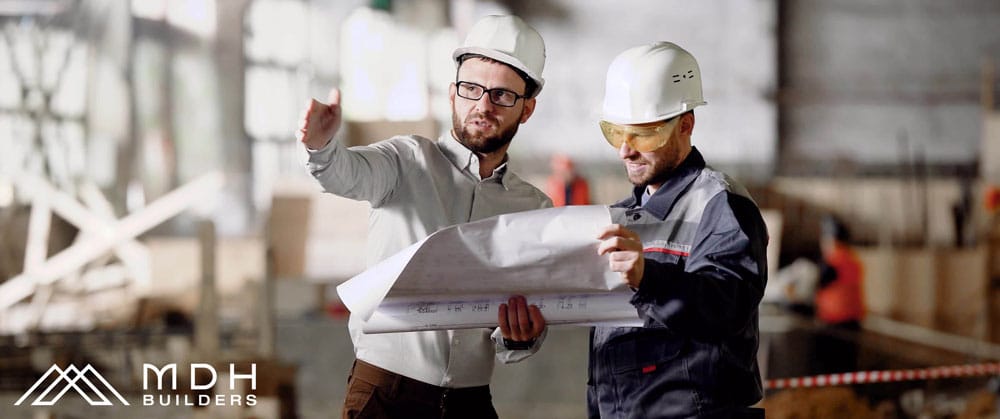HOMEBUYERS
The 2020 Lumber Bubble Has Burst
After a turbulent 16 months, it seems the lumber bubble has finally burst, with the market price for one thousand feet coming down for the ninth consecutive week. As the price falls to around the $700 mark, the construction industry and legion of home do-it-yourselfers are poised to begin new projects as the cost of building suddenly becomes a lot more viable.

The run on lumber has been rampant since the start of the pandemic, with home-building and home renovation projects during the Spring and Summer months causing prices to become sky-high. The inflated price fell back down to Earth on Friday, seeing $689 per one thousand meters of two-by-four soft-wood lumber, most commonly used by housebuilders in framing their projects. This is a massive 58% drop since the material’s all-time high price of $1,670 on May 7.
The CEO of New York-based Sherwood Lumber, Andy Goodman, expects the prices to drop even further, claiming “we are in a freefall,” unsure of where the market will end up. And a similar-sized drop was seen in the lumber futures market, where market activity is speculated on between traders. There, the price dropped from a high of $1700 on May 10, down to a much more modest $702 currently.
“I think ultimately, this decline was very much inevitable,” claims Kyle Little, Sherwood Lumber’s Chief Operating Officer, “when you have over a 400% price move in about a 15-month period of time, the volatility involved with that will lead to price adjustments like we are experiencing right now.”

Why Did Lumber Prices Get So High?
As Covid-19 caused economic shutdowns across the globe, industries prepared to weather the storm by curbing or stopping their operations. Because of the lack of economic activity, those in construction and material supplies expected a prolonged slump in the housing market, leading to sawmills and other lumber-related industries slowing their operations to a crawl.
However, that slump never happened, with a booming housing market as a result. Homebuilders simply couldn’t keep up pace with the demand for new constructions. In February, for example, the housing inventory fell by almost 30% to a low of 1.03 million. According to the National Association of Realtors stats, you’d have to go all the way back to 1982 to find such a low amount of houses on the market.
Obviously, with such a demand for houses, housebuilders wanted in on the action, looking to meet the need for new housing and strengthen the industry at the same time. In 2020, though, ninety-six percent of homebuilders surveyed by the National Association of Home Builders (NAHB) claimed that building materials were the most significant challenge they faced in meeting the demand. This contrasts to 2019, where material supply was only reported as the main problem by sixty-six percent.
And it was lumber that was the main culprit, with almost all housebuilders claiming they were having a tough time getting hold of the material. This surge in demand caused the prices to go through the roof, as those who held lumber supply found themselves with a hot-commodity. It’s believed that demand was so strong that the shortage of lumber was adding up to $24,000 onto the price of a new home.
As well as the housebuilders, lumber was sought after by those having renovation work done on their homes, whether by contractors or attempting some DIY themselves. From home extensions to patio-decking, the lock-downs of 2020 caused those stuck at home to use their newly found free time wisely, repairing and revamping their property.

Why Is the Price of Lumber Coming Down?
Nevertheless, while the price of lumber shot up quickly over the covid-19 pandemic, the price drop has been equally dramatic.
One of the most significant factors behind this drop in price is that the high cost of lumber meant some housebuilders slowed operations, with the exorbitant cost of lumber simply making some projects unviable. In May, new home construction activity dropped by nearly nine percent, a stark contrast to March, which saw the most projects started for over 14 years.
Similar to the NAHB’s survey, research shows that the main reason home renovation projects were delayed or abandoned during the pandemic was simply down to material cost. This has led to a simultaneous drop in home improvement-related sales by a little over eight percent.
Perhaps one of the biggest contributors to this sudden drop in price is the ramp-up in saw-mill production. In response to the demand for lumber, wood production, for example, saw a 13-year high in June. While the response to this increase in supply was slow, we are now starting to see prices correcting as this new material finds its way into the market.
The CEO of Deacon Lumber, Stinson Dean, believes this refusal to buy at such elevated prices was the main reason the bubble burst, but is also simply due to the easing of covid-19 restrictions, meaning the perfect storm that created the situation is clearing up.
“The short squeeze dynamics are not there today like they were in the spring,” Dean claims.

Will Prices Drop Further?
It’s uncertain whether we will see any further drops in lumber’s price. While the bubble may have burst, and the worst of things may be over, the cost of lumber appears to have stabilized around the $700 mark. This new price point is still somewhat higher than the pre-pandemic price of $500 or below per thousand feet of board.
While no one knows how the markets will behave, especially given the uncertainty that covid-19 is still causing, many believe the price will remain elevated for years, with this simply being the new price for lumber. Prices move up and down but tend to return to the mean. However, with such high prices seen over the pandemic, this new mean price point could remain significantly higher than what the industry is used to, with only a little downward movement expected.

While there is still uncertainty ahead for many industries, lumber supplies are now steady with housebuilders and renovators resuming projects, confident that this new price point could be perhaps the new stabilizing point for the foreseeable future.

Connect
Let's talk about your project
We provide best-in-class construction services with honesty, a passion for the creative process and a win-win philosophy.




